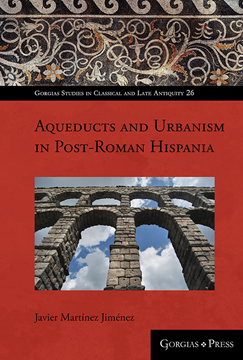Javier Martínez Jiménez

Dr Jiménez studied Classical Archaeology and Ancient History at Oxford, where I also wrote Ph.D. He is currently a Research Associate at the University of Cambridge working as on the 'Impact of the Ancient City Project'. He has previously directed two archaeological projects in Spain on late antique sites, Casa Herrera in Mérida and the Reccopolis aqueduct, the former being the last aqueduct built in the west following Roman patterns.
Aqueducts and Urbanism in Post-Roman Hispania
ISBN: 978-1-4632-3915-2
Our current knowledge of Roman aqueducts across the Empire is patchy and uneven. Even if the development of “aqueduct studies” (where engineering, archaeology, architecture, hydraulics, and other disciplines converge) in recent years has improved this situation, one of the aspects which has been generally left aside is the chronology of their late antique phases and of their abandonment. In the Iberian peninsula, there is to date, no general overview of the Roman aqueducts, and all the available information is distributed across various publications, which as expected, hardly mention the late phases. This publication tackles this issue by analysing and reassessing the available evidence for the late phases of the Hispanic aqueducts by looking at a wide range of sources of information, many times derived from the recent interest shown by archaeologists and researchers on late antique urbanism.
$114.95 (USD) $68.97 (USD)

